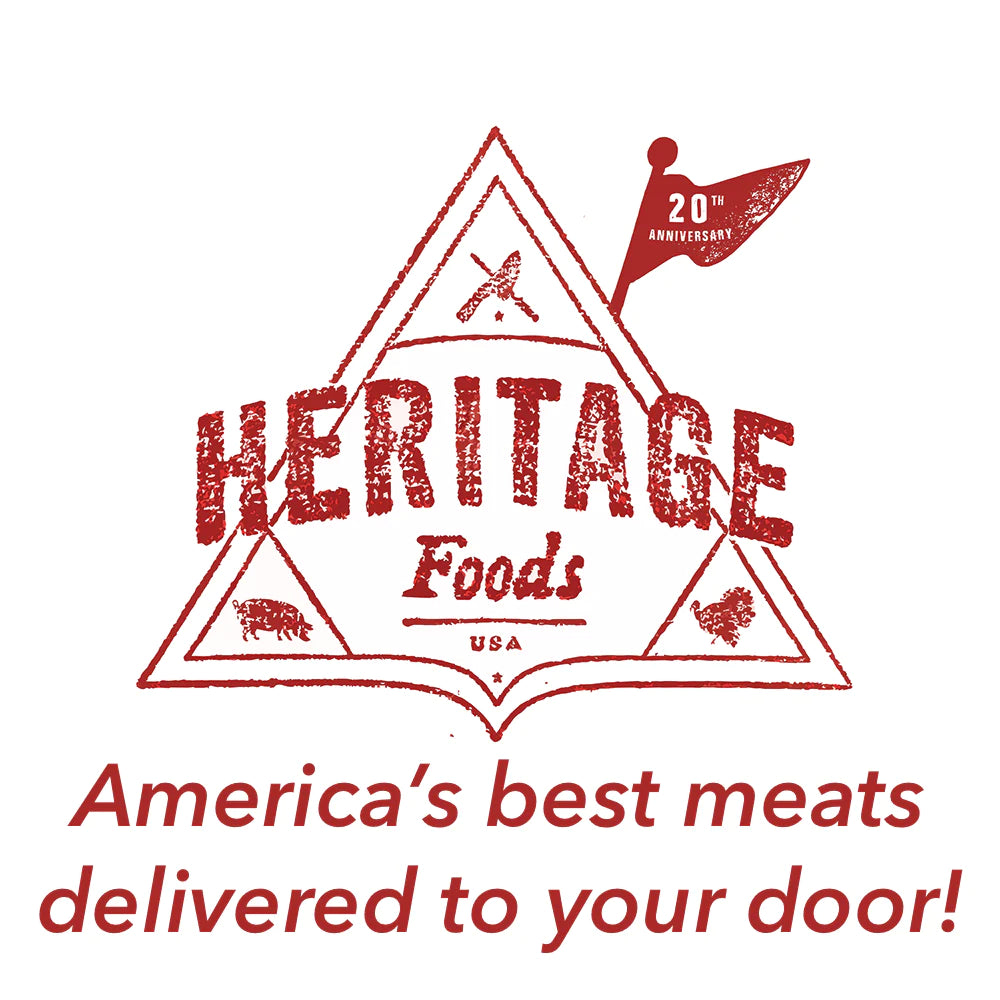100% Customer Satisfaction Guaranteed | Questions? Call Us at (718) 389-0985
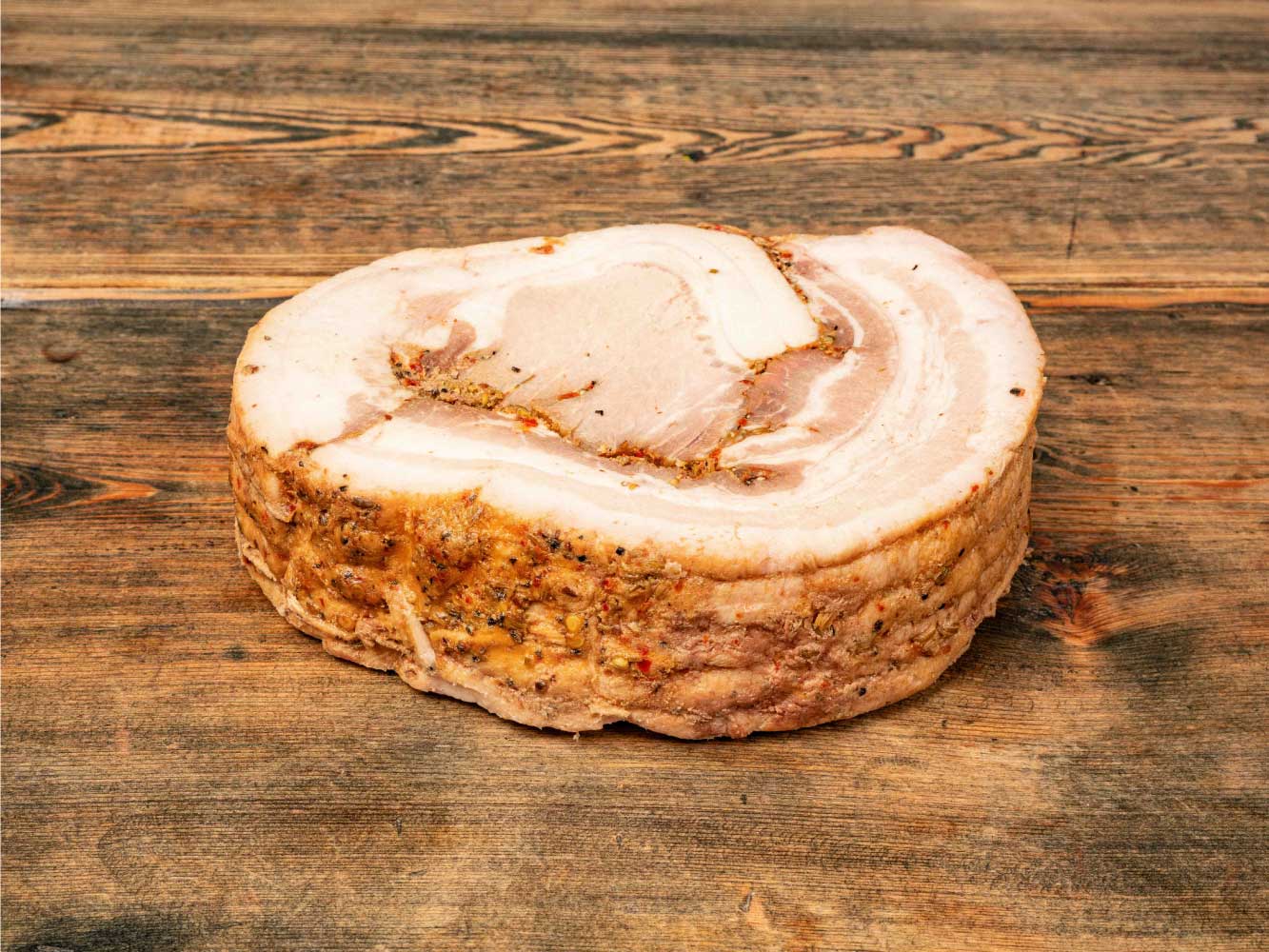
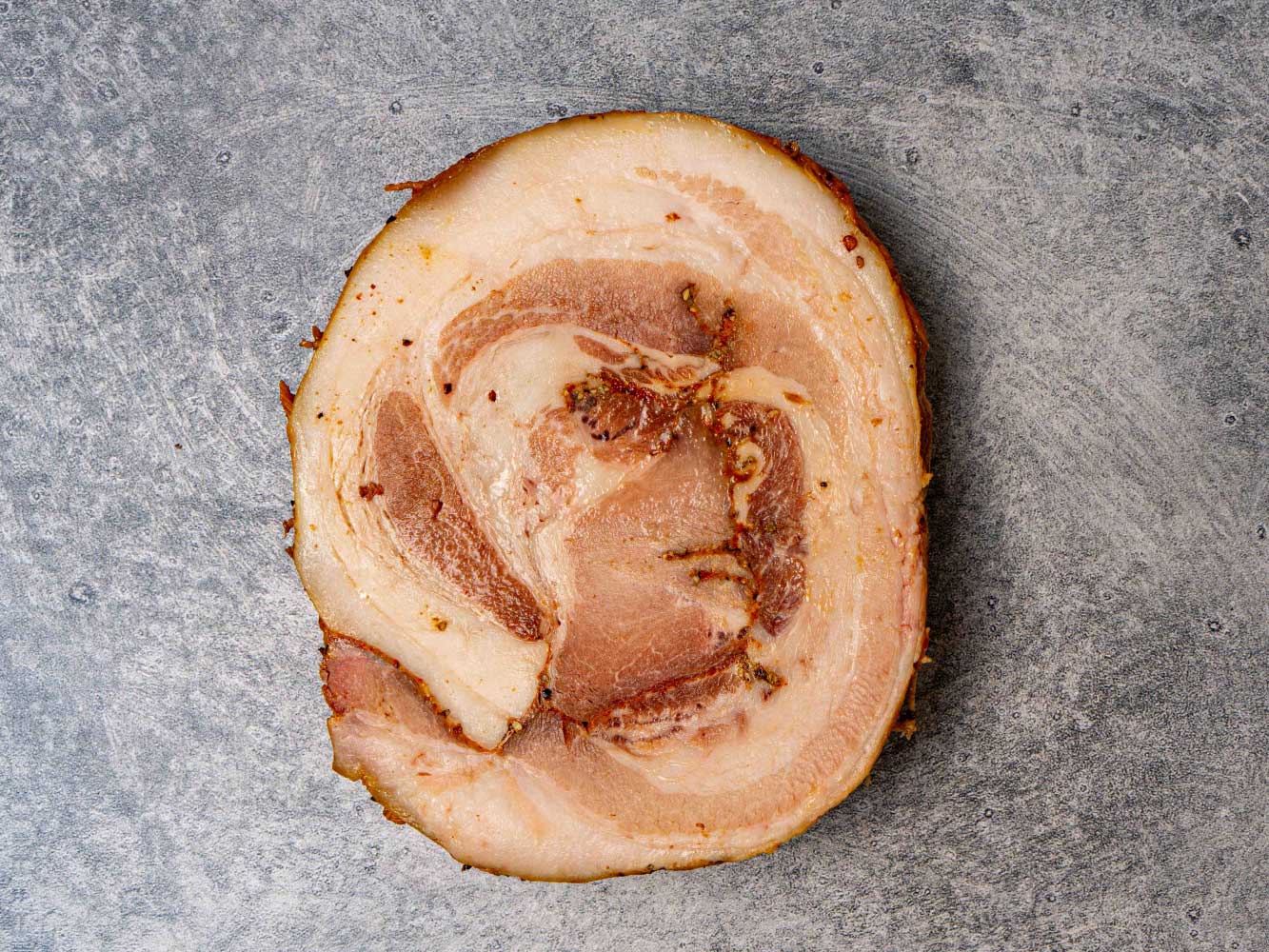
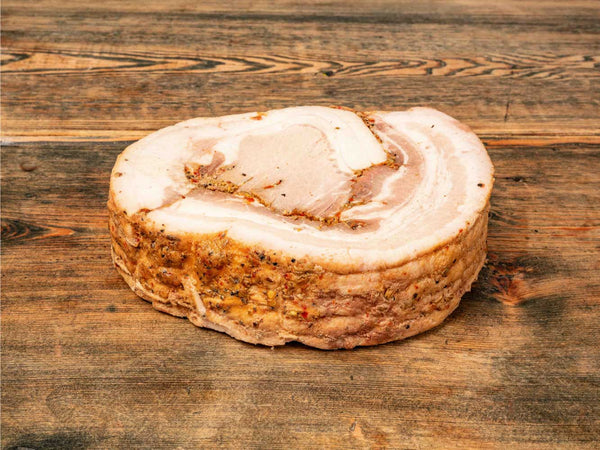
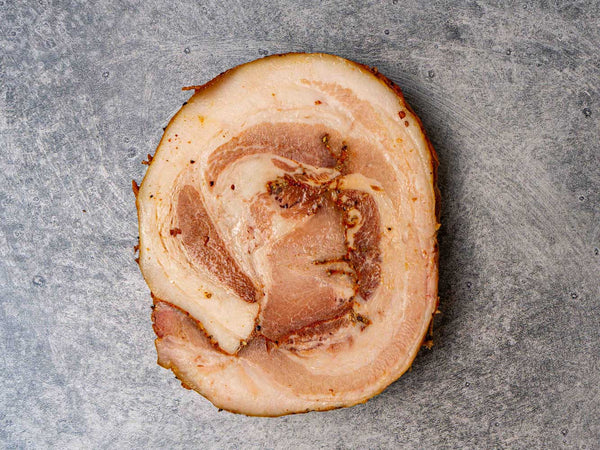


One 36-40 oz boneless slice — our traditional porchetta sliced for fewer leftovers and fully cooked for faster preparations by Tempesta Artisans
Heritage Porchetta Slice
One 36-40 oz boneless, seasoned, fully cooked slice
Newman Farm Berkshire
This might be our biggest news of the year! The most delicious Italian tradition, normally reserved for a holiday centerpiece, can now be on your table year round for lunch or dinner in under 40 minutes! Our 1-2lb porchetta slices are fully cooked and ready to eat — simply sear in an oven safe pan and finish in a 450 degree F oven for 20-25 minutes.
Our porchetta crafted from Newman Farm's luscious Berkshire pork by our friend Antonio Fiasche at Tempesta Artisans is a perfect example of a true classic Italian porchetta. Unlike many porchettas today, this one starts with the full 30lb pork middle which contains several cuts: the skinless belly is wrapped around a boneless center-cut loin roast, generously seasoned throughout.
These slices are skinless, so to create a crispy exterior, we recommend finishing on high heat in the oven — making every bite an intense, joyous, culinary treat.
About Tempesta Artisans: Tony Fiasche paints with flavor. He is a master artisan — the son of an Italian family from Calabria who has been curing salumi for five generations. Tony came up the old-fashioned way, learning every job from busboy to chef at his family restaurant, before partnering with his father Agostino to launch Tempesta Artisans. They began by specializing in their tantalizing ‘nduja, a spreadable spicy Calabrian salami that is at the heart of their passion for uncompromised flavor. Tony has won many awards, including the Charcuterie Masters Grand Champion in 2016, and numerous Good Food Awards.
When Heritage Foods started in 2001 we set out to sell heritage Thanksgiving turkeys. For three years our turkey project grew, but naturally mating turkey is a seasonal food and two of the three farmers we worked with to raise birds were looking for a more regular source of income if they were to continue working with us. So we committed to selling pork, which can be produced year round, as long as the breeds came from historic genetic lines, just like the turkeys. Now, 20 years later, Heritage Foods still works with those two original farms, as well as a few others, who together introduced the word “heritage pork” to menus across the country by providing center of the plate pork dishes to hundreds of America’s best restaurants from coast-to-coast as well as thousands of homes through the Heritage Foods mail order division.
Newman Farm
Myrtle, Missouri
In 2006 we got a handwritten letter from farmer Mark Newman asking us if Heritage Foods would ever consider selling his pasture raised old school Berkshire pigs. We said yes and a relationship grew that still continues today, now through his son David who has maintained the genetic line of Berkshires which can be traced back to the 17th and 18th century lines that came to these shores by way of the Berkshire region of England.
From the air, Newman Farms, in south central Missouri, in the heart of the Ozarks, looks more like a pioneer settlement or a holiday camp than any sort of pig farm. Wooden huts are scattered across green fields like bungalows, where contented Berkshire pigs live their lives, happily on-pasture. It’s an idyllic image, far from the modern machine that is industrial pig farming.
Pigs on Newman Farm are raised 100% on-pasture. The sows raise their piglets in huts that dot the fields of the farm. The babies live inside the huts until they are old enough to jump over the 6-inch wooden board that blocks the entrance. Once they make the great leap, they have an entire field to run on and they can mingle with the other piglets from the other huts.
As they age together, the piggies will get moved to new paddocks, as part of the rotational grazing program that keeps the soil healthy and the pigs clean. As adolescents the pigs move into grow barns where a few dozen of them live together in what seems like an open-air college dormitory where they roll over each other and play all day long.
David Newman is both a farmer and scientist. “The farmer came first,” he laughs. His degrees are in animal science, and he holds a Ph.D in meat science and muscle biology, focused on meat quality. “As I became a scientist and got involved in education, I applied what I was learning to understand what we could do better.”
Berkshires were the favorite breed of British royalty and were first introduced to the New World in 1823. Since then, Berkshire bloodlines have remained exceptionally pure and have become a mainstay favorite of chefs and diners, legendary for their exceptionally bright pork flavor and thick, delicious fat cap. And if anyone were to question their excellence, just ask David. “It’s not a matter of opinion!” he insists, passionately. “It’s a scientific fact, Berkshires are the most marbled hog on the market today.” David is a master breeder and works hard to keep the lines on his farm separate and he is always working to improve the Berkshire breed on his farm.
David lives on the farm with his wife, Kristin, his mom Rita, and his two kids, and teaches animal science at Arkansas State, bringing with him what few teachers ever will: a real-world case study, a not-so-secret double life, professor as farmer, farmer as professor. As he says, “there is nothing better than learning from someone who has some skin in the game. I make a living for our family on the farm, and I bring that with me when I educate my students. It is the real American dream, America at its best.”
“I got my start through my family. My grandfather was a farmer. My parents were hog farmers, but primarily in the commercial pig business. In the 1980s my parents raised pigs in confinement. There were some very challenging economic times for everyone in production, and we realized we were going to have to do something differently.
“In the 1990s my parents decided they wanted to go back to their roots. We were going to have to be very large to be successful in the commercial sector, and my father decided we should focus on quality. We changed our genetic program and our nutrition program. We became Certified Humane®. We never confine any animals — ‘everybody’ has pasture access — and we chose to focus on Berkshire pigs for their quality.”
David is the future of American farming! He sits on the National Pork Board but also runs a small family pig operation. He is young, energetic and strong. He is a great speaker and holds in his brain so many secrets about pigs and pig farming that most of the larger pig operators have forgotten since they raise their pigs in unnatural surroundings: indoors and in confinement. He travels around the world and is a sought out speaker at seminars and events, always promoting the old way of raising pigs but with an understanding of what it takes to be successful in modern times. David works with a team of farmers who raise his Berkshires to supply Heritage Foods and the national network of chefs who rely on his product for their menus.
Berkshire
Origin: 1823 Kentucky/ Illinois by way of Western England and outside London.
Flavor Profile: Sweet with depth of flavor, Berkshire pork is balanced and the most universally loved of all the Heritage breeds.
Producers: David Newman and a consortium of 12 family farms in Kansas, Missouri and Iowa.
History: For years the Royal Family kept a large Berkshire herd at Windsor Castle — our Berkshire pigs are traceable back to these old English genetics. This would eventually become the most popular Heritage breed of pig in the United States because of its supreme marbling. Prized by the Japanese who imported it as "Kurobuta" pork, the Berkshire is recognized by 6 white spots at the tip of its feet, nose and tail.
How to Prepare
1. Preheat your oven to high heat, approx 450 degrees F.
2. Remove the porchetta slice from its packaging and pat dry on all sides.
3. In a cast iron (or another oven safe pan) on medium-high heat, sear the porchetta on both sides until evenly browned and crispy, approx 4-6 minutes per side.
4. Transfer the pan to the oven for 20-25 minutes (depending on the thickness) or until the center of the slice registers 140 degrees F.
5. Rest, remove the strings, slice, and serve.
© 2024, Heritage Foods Powered by Shopify
